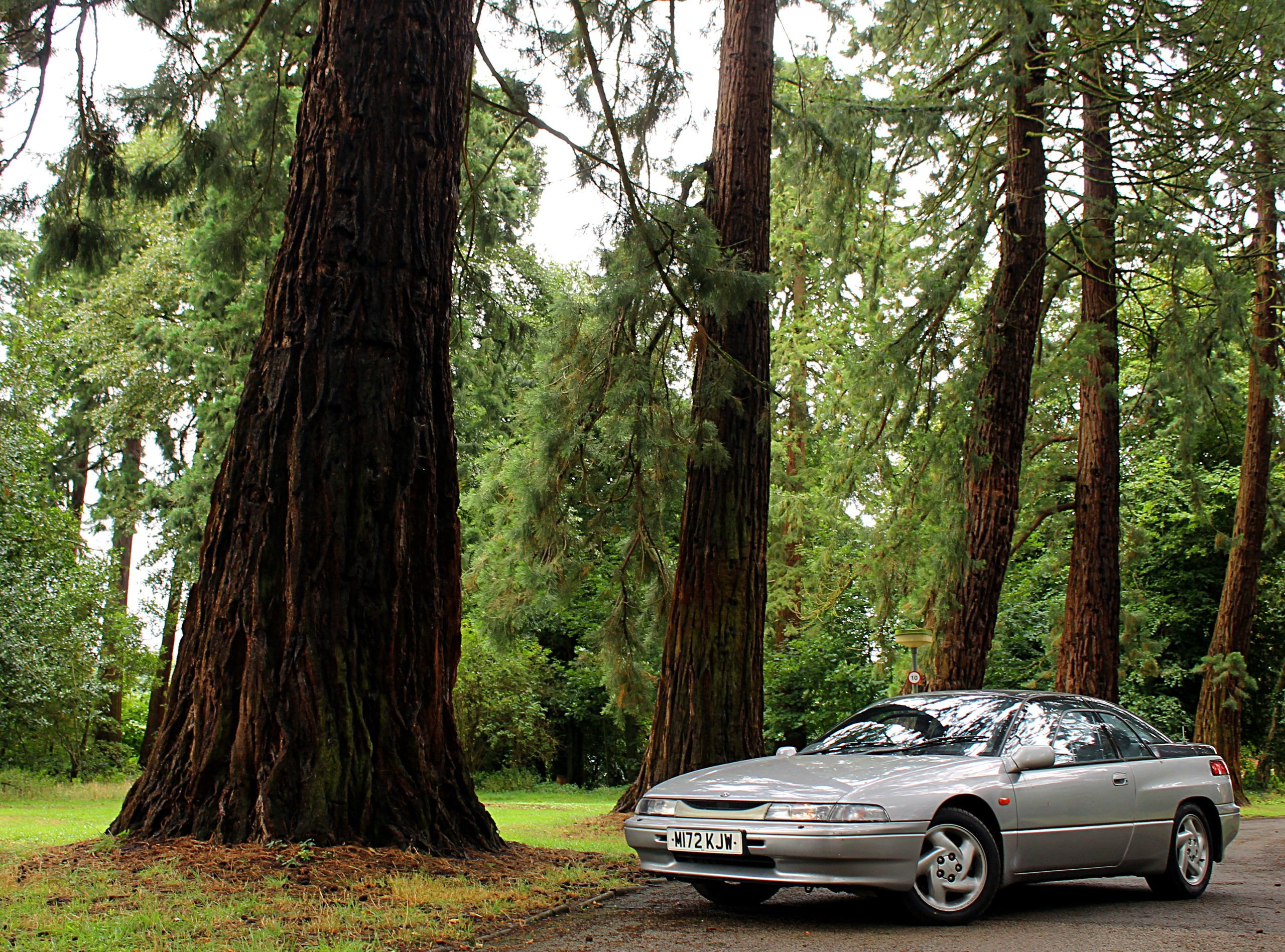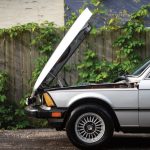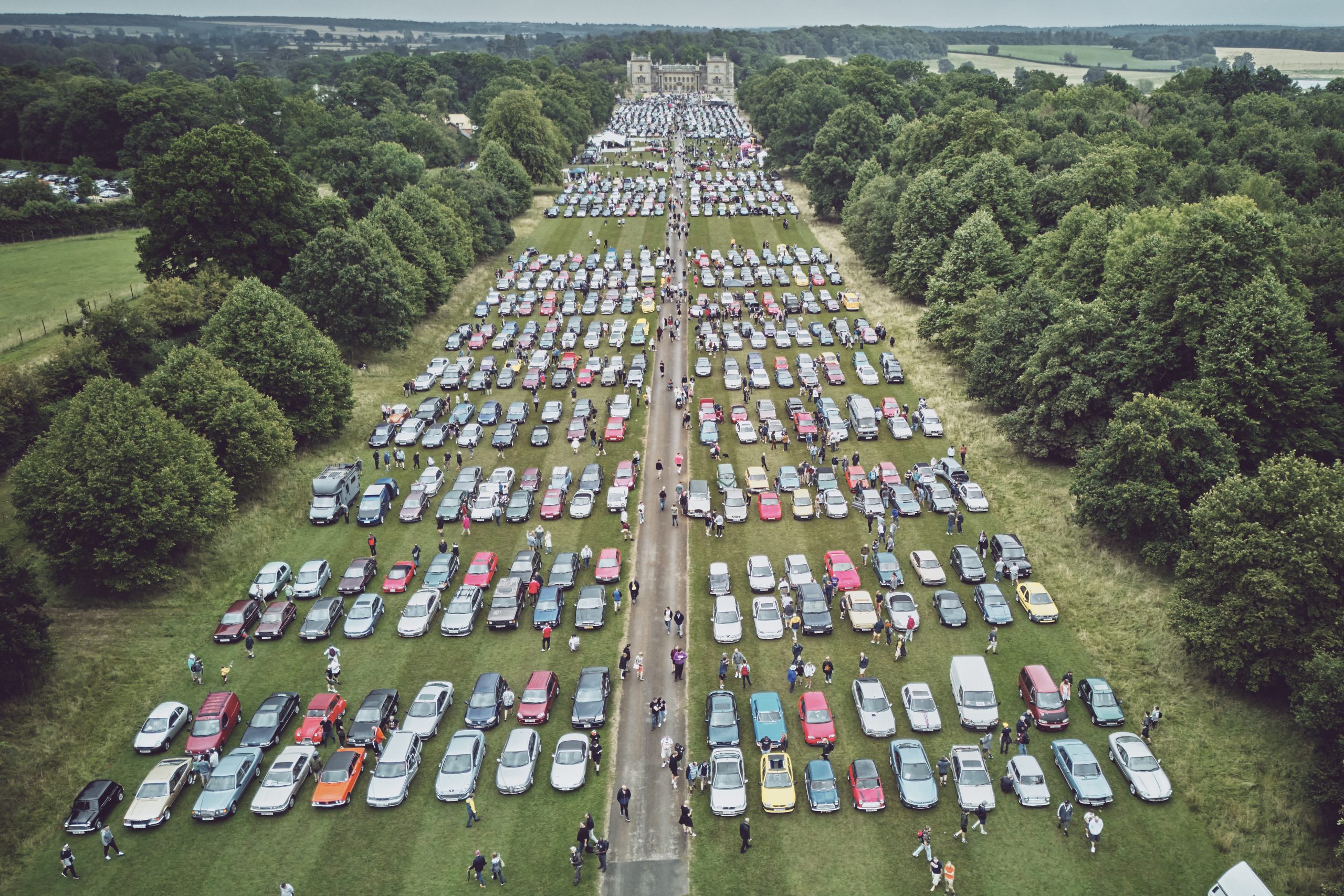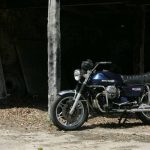Author: Jon Burgess
Photography: Subaru/Jon Burgess
Why Subaru’s bold attempt at GT car deserves love, and not just for its styling.
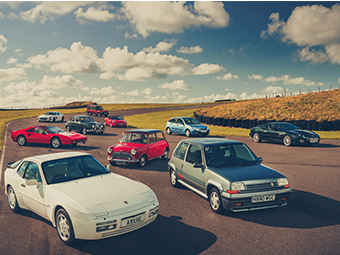
A forgotten hero, the Subaru SVX has an impeccable origin story: dreams of conquering the USA, aircraft-inspired styling like no other car before or since – and a fatal flaw that put it out of contention. That said, Subaru had form for pushing boundaries, as Jason Cammisa’s video on the XT Turbo explained.
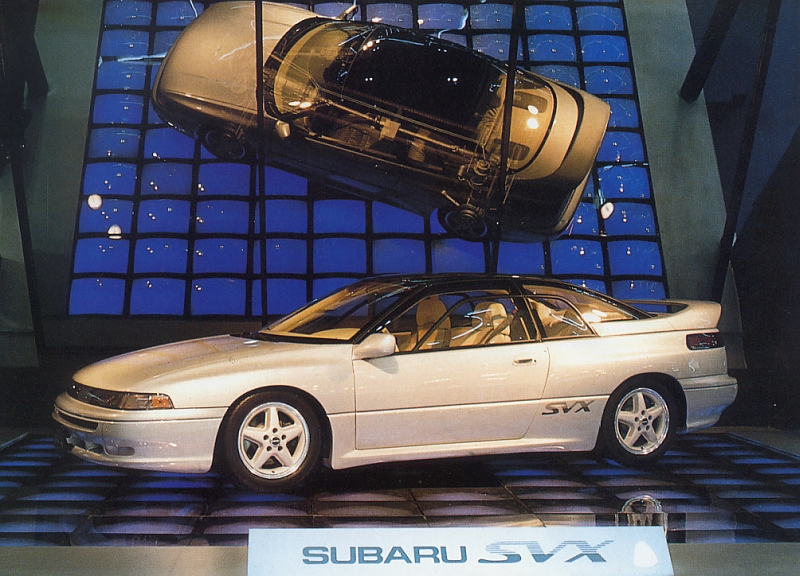
Released in 1991 in the US and Japan, then stuffed awkwardly the following year into UK showrooms the “Subaru Vehicle X”, (the “Alcyone” prefix was dropped outside Japan), was keenly priced at £27,999 (£64,400 today).
More importantly, it offered everything US GT buyers wanted: dramatic Giugiaro concept car styling with a torquey, naturally-aspirated 3.3-litre flat-six, an automatic gearbox, and full-time four-wheel drive. Subaru had long coveted a greater market share across the pond – and the SVX looked like it could forge new markets there as an alternative to the Ford Thunderbird or Jaguar XJS.
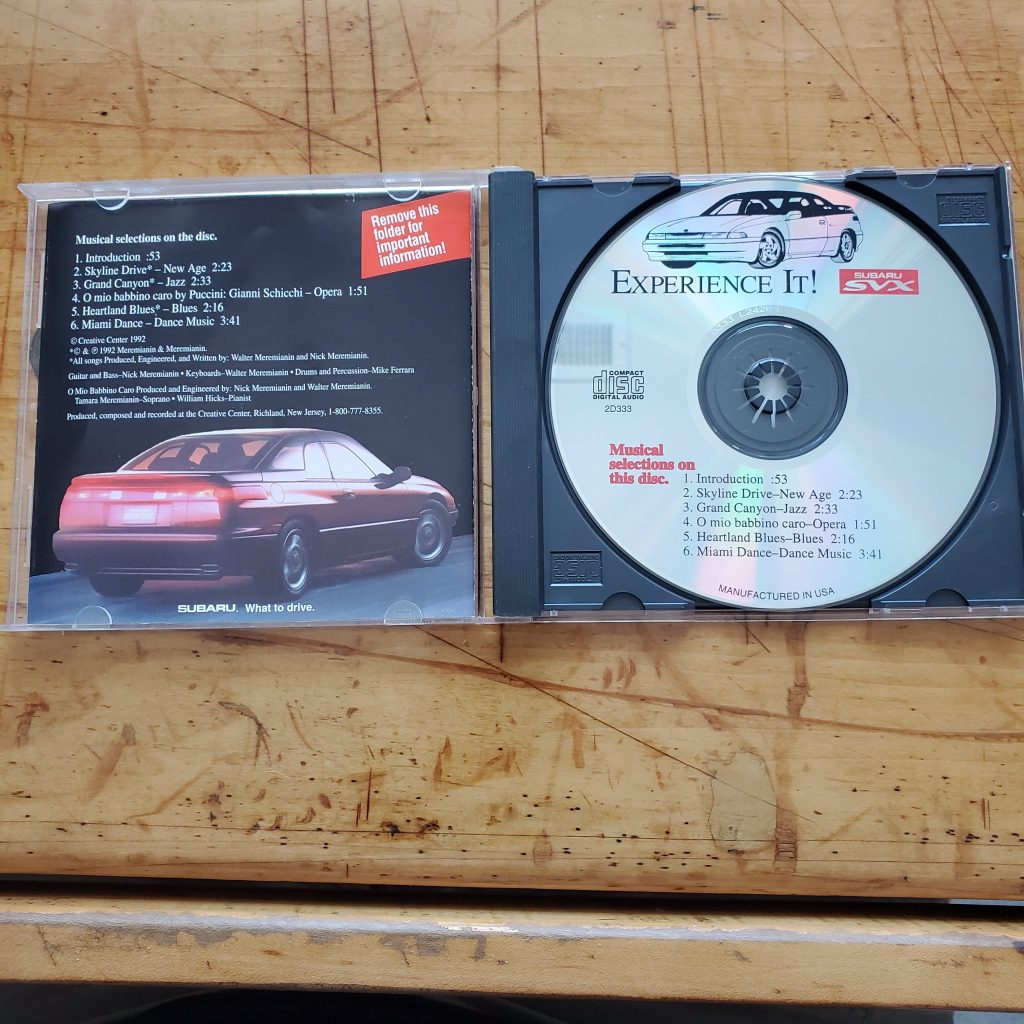
The 1988 six-cylinder XT6 (Alcyone VX in Japan) was just the start. The SVX (or “Subaru Vehicle X”, spun off “Subaru VX” that marked the peak of Alcyone XT production) kept the “Alcyone” prefix in Japan, named after the brightest star in the Pleiades cluster that appears on Subaru’s logo.
Aesthetically, the SVX was “peak wedge”, though it couldn’t escape comparisons with Toshi Saito’s Ford Probe or Wayne Cherry’s Opel/Vauxhall Calibra, both of which it often gets mistaken for head on.
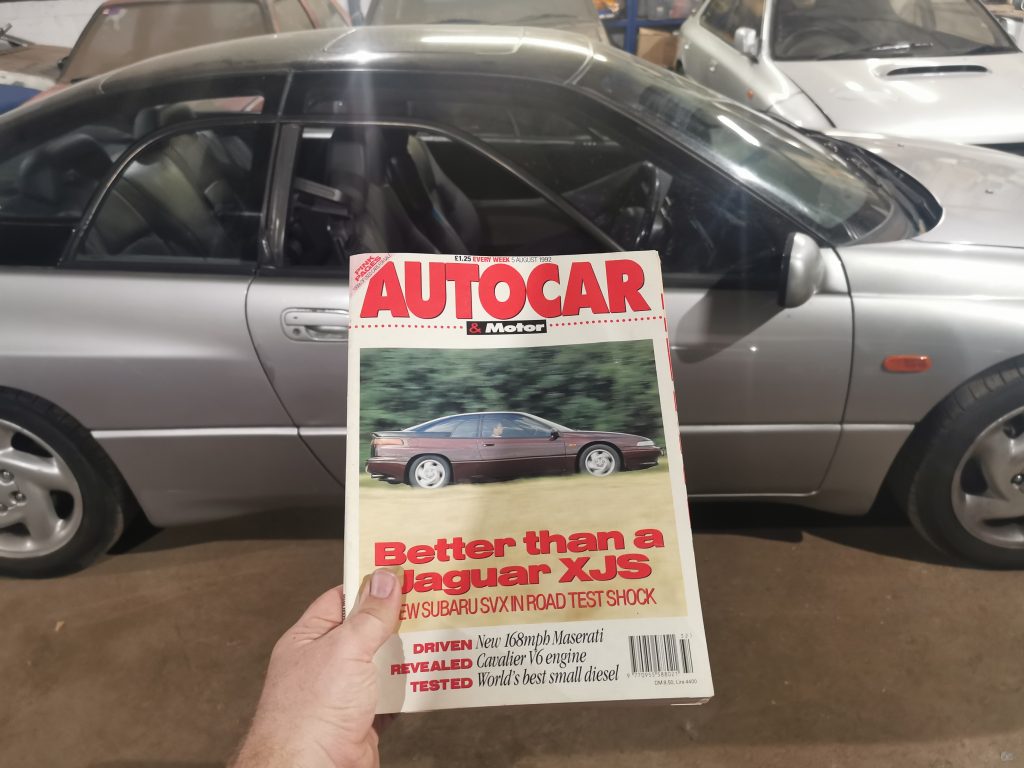
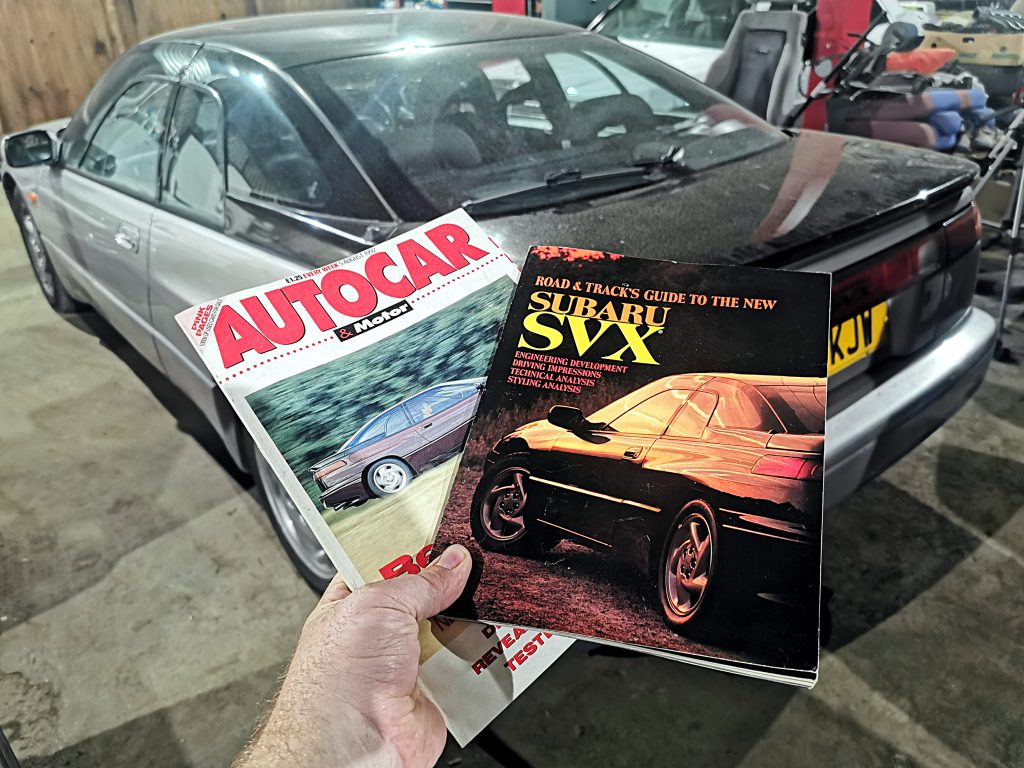
It brought window-within-a-window motoring to the XJS class: once the reserve of Italian supercars, it showed off Subaru’s aircraft heritage in a way Saab could only dream of; a canopied fighter jet for the road reminiscent of the Fuji T-1 that was training the next generation of Japanese Air Defence Force pilots. Subaru had to pioneer a new metal to glass bonding process to get the job done: the 1989 Tokyo Motor Show car used a one-piece moulded “bubble” that made the car unreasonably heavy.
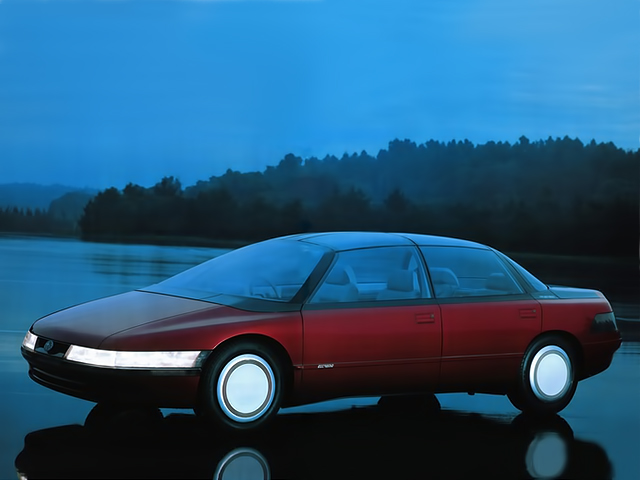
Were the curvature of the glass any greater, it would have needed a wider door aperture; testers found that they could drive at high speed with the windows down without any buffeting.
Closer to the ground, Subaru’s Hiroshi Sarukawa’s team rounded off the edges of Tetsuya Hayashi’s Alcyone (XT); with input from Giorgetto Giuigaro, the SVX still cut through the air with the same 0.29 Cd drag coefficient of its predecessor, an impressive achievement for the considerably wider, heavier, and longer SVX. Its canopy drew inspiration from Subaru’s earlier F9-X and F-624 Estremo concept cars, the latter consummating ideas for an Alcyone VX saloon that neither Fuji nor IAD’s Royale realised.
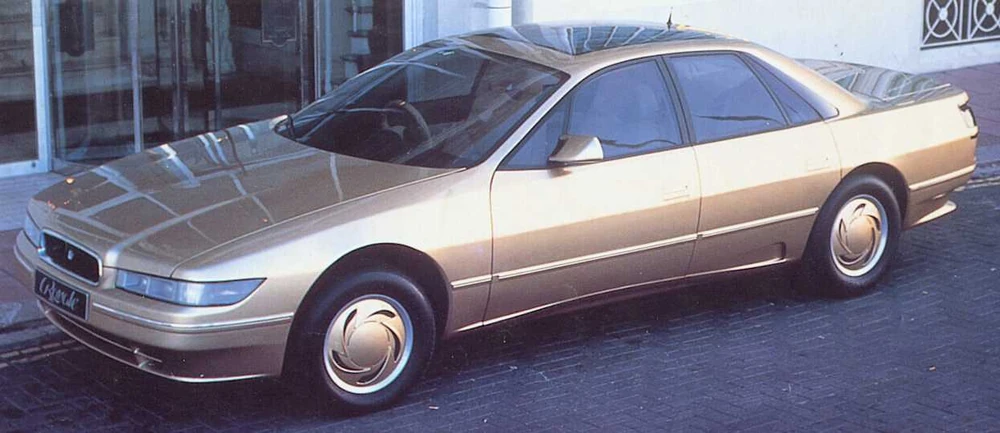
That Subaru had to spend a fortune to get the production SVX to resemble the concept car is one thing; that it shared virtually no components with existing models is another. The 3.3-litre, flat-six “EG33” engine was Subaru’s largest but owed nothing to the 2.7-litre “ER27” used in the Alcyone VX and XT6. It was never used again after the SVX, either..
While the development budget broke all company records, certain things had to give for the SVX to make production. The concept car’s 4WS ended up in a limited-run, Japan-only model known as the Version L: just 1904 were built, other SVX models dispensed with it altogether. Despite appearing in a used car lot during 1991’s Until the End of The World, the concept SVX was broken up several years ago, its parts auctioned off.
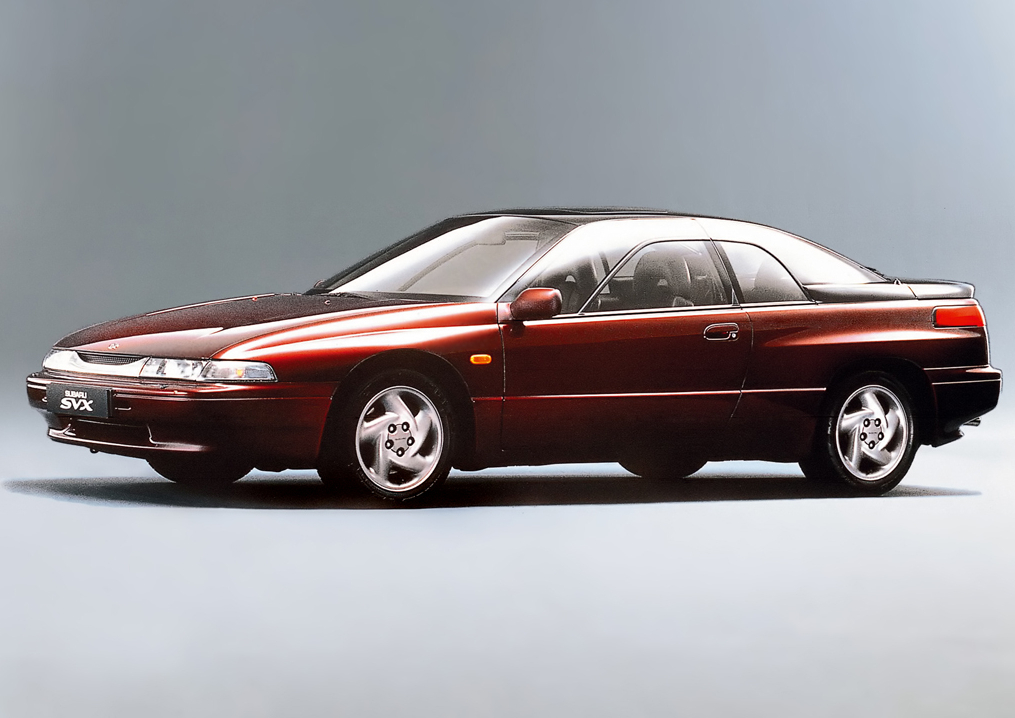
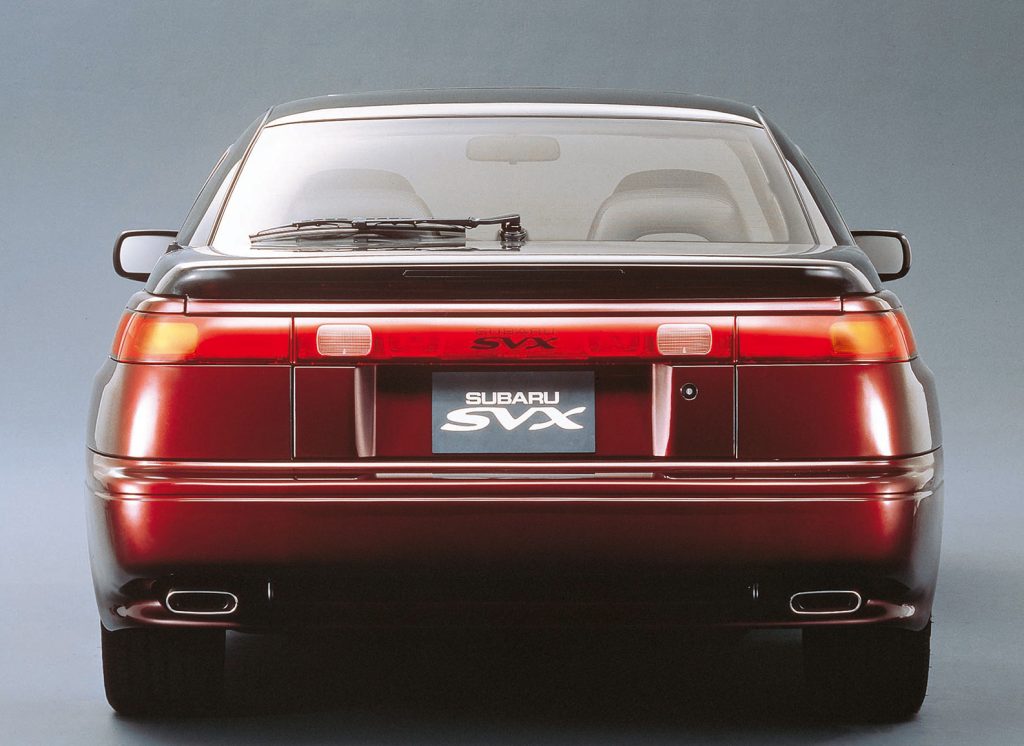
The SVX’s Achilles’ Heel also came about through a lack of funds: its lack of a manual option. While a four-speed automatic suited its long-distance GT role down to the ground, terminally online, whinging revisionists demanded a manual gearbox, decades later. Never mind that five-and six-speed “stick” variants of the BMW 850, Jaguar XJ-S and Porsche 928 sold in tiny numbers, the Internet had decided – and that was that.
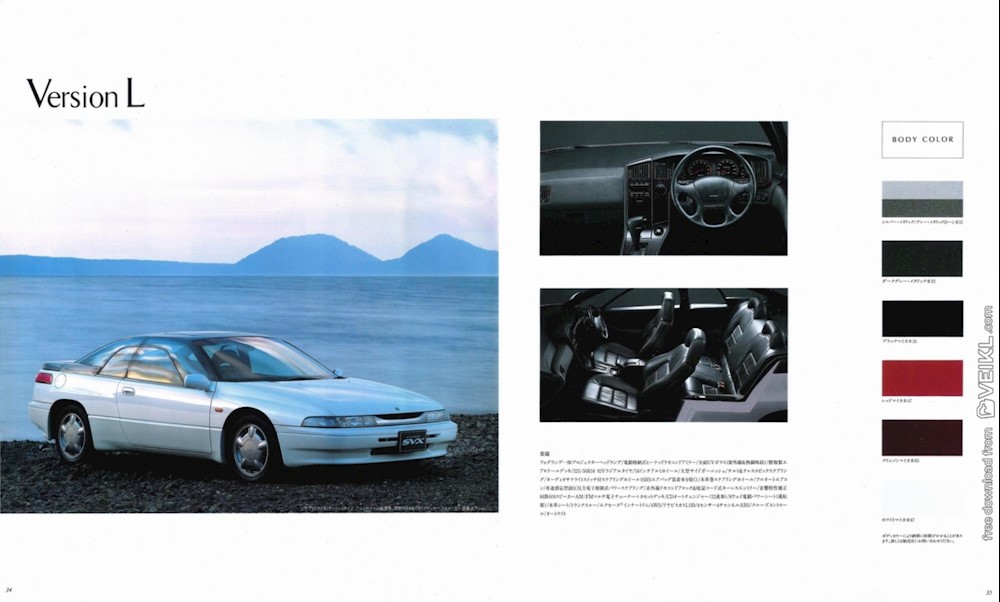
Unofficial explanations put the omission down to a lack of staff; what’s more likely is that no Subaru transmission in stock could handle the EG33’s torque.
While beefed up to take the strain, in service, Subaru’s chosen automatic, the four-speed 4EAT (E-4 AT) failed frequently, owing to the way the shifts were programmed to “slur”, increasing the heat in the clutch packs. Combine that with a sub-optimal fluid cooling circuit, few SVXs managed 100,000 miles without a costly rebuild: since then, separate ‘box coolers and regular maintenance have kept many SVXs on the road.
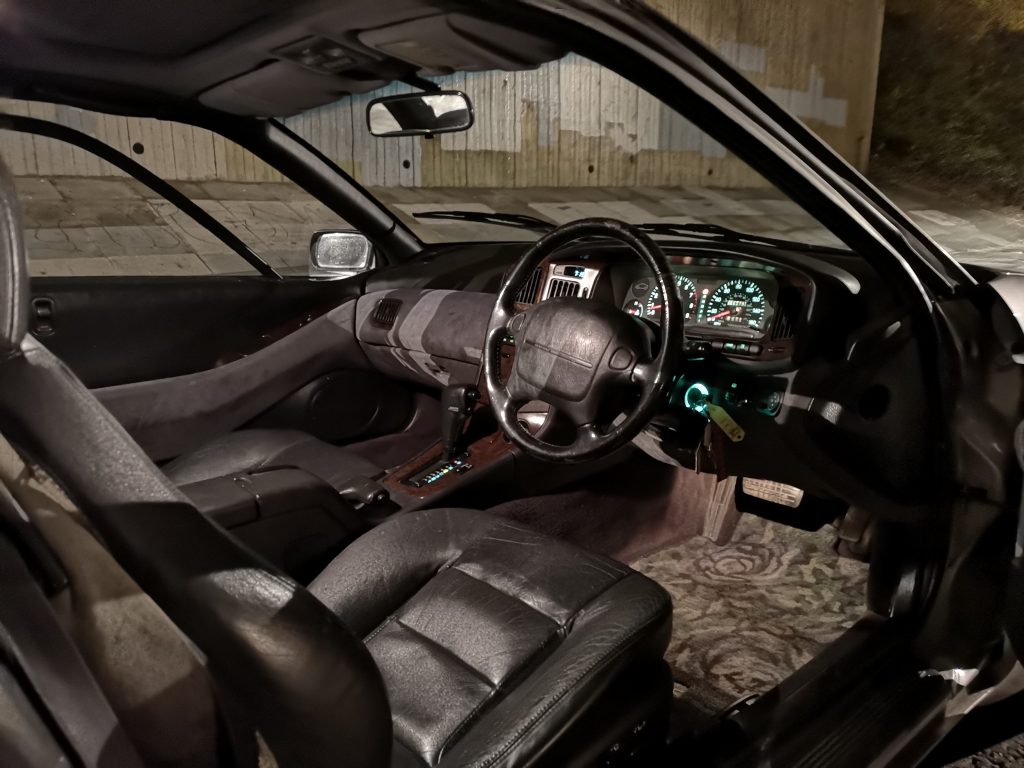
It was too soon for this problem to show up at launch, when the likes of Road and Track in the US and Autocar praised the Subaru SVX to the sky, the latter chose it over the likes of the Jaguar XJS 4.0, Audi S2, Honda Legend Coupe, and Rover 800 Coupe.
An oncoming recession, limited supply (which saw around 250 cars of a 2478-unit European supply come to the UK) and expensive repair bills quickly sidelined the SVX.
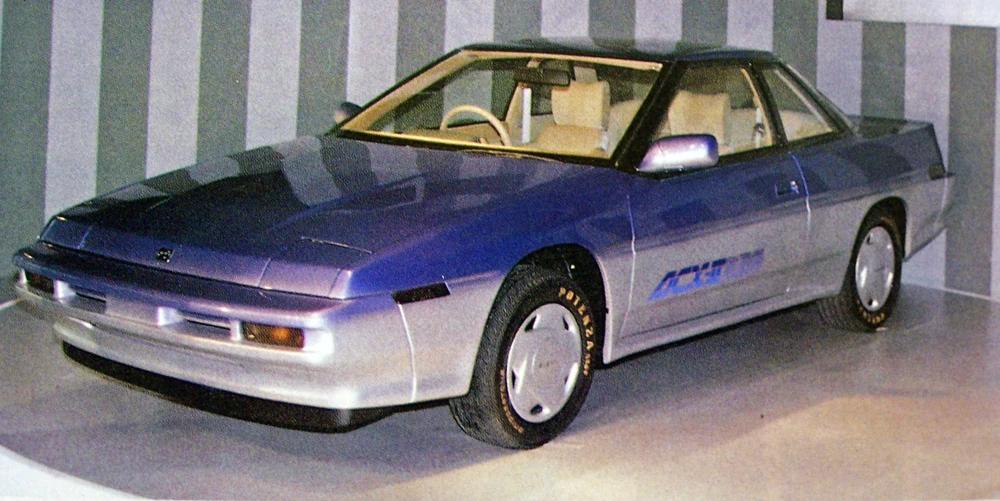
Japan received far more special editions than anyone else: witness the S40, S40 II, S3 and S4, the former two celebrating Subaru’s 40th birthday, the latter two alternate variations on the Japanese market Version E, with the S4 bringing a revised front grille coveted by SVX fans.
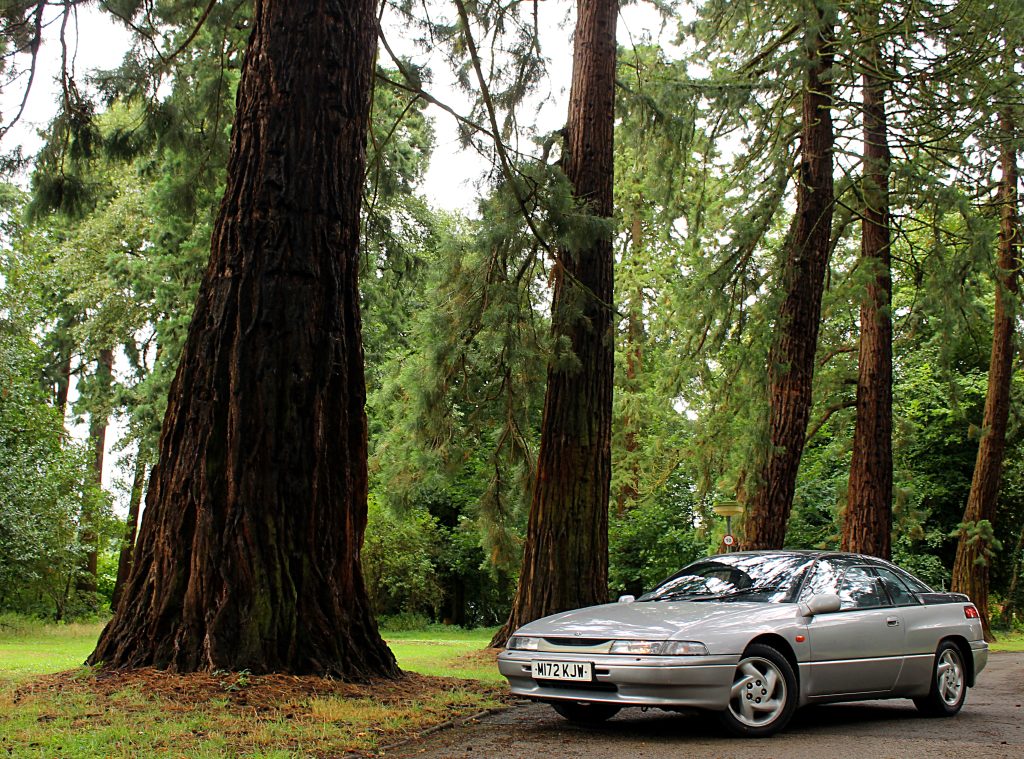
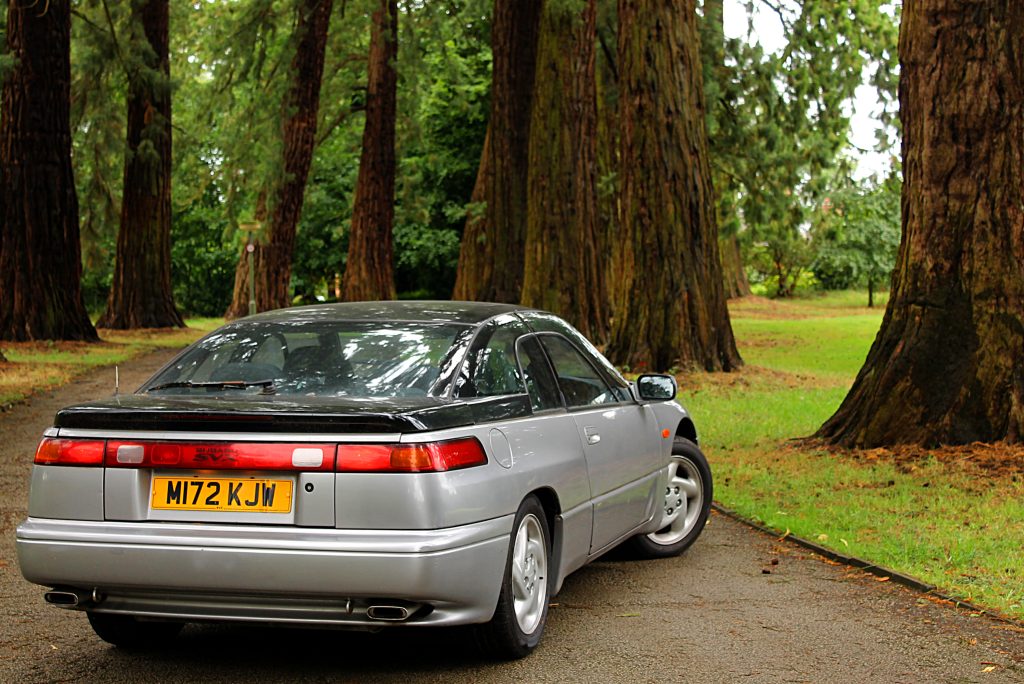
The Subaru SVX remained on sale in the US and Japan longer than anywhere else; it ran between 1991 and 1997 (and had a cheaper front-wheel drive option made available), whereas supply petered out here in 1996. The US got the lion’s share of production, too: 14,257 cars as opposed to 5951 for Japan.
“Japan’s XJS” may not have the following of the British car, but it remains swift across country regardless of the weather. Fit the right tyres and the only thing stopping you is its lack of ground clearance – oh, and a rearward-biased 35:65 torque split thanks to the “VTD” (Variable Torque Distribution) drivetrain fitted to European, JDM, and UK cars, the first Subaru to adopt an unequal torque split.
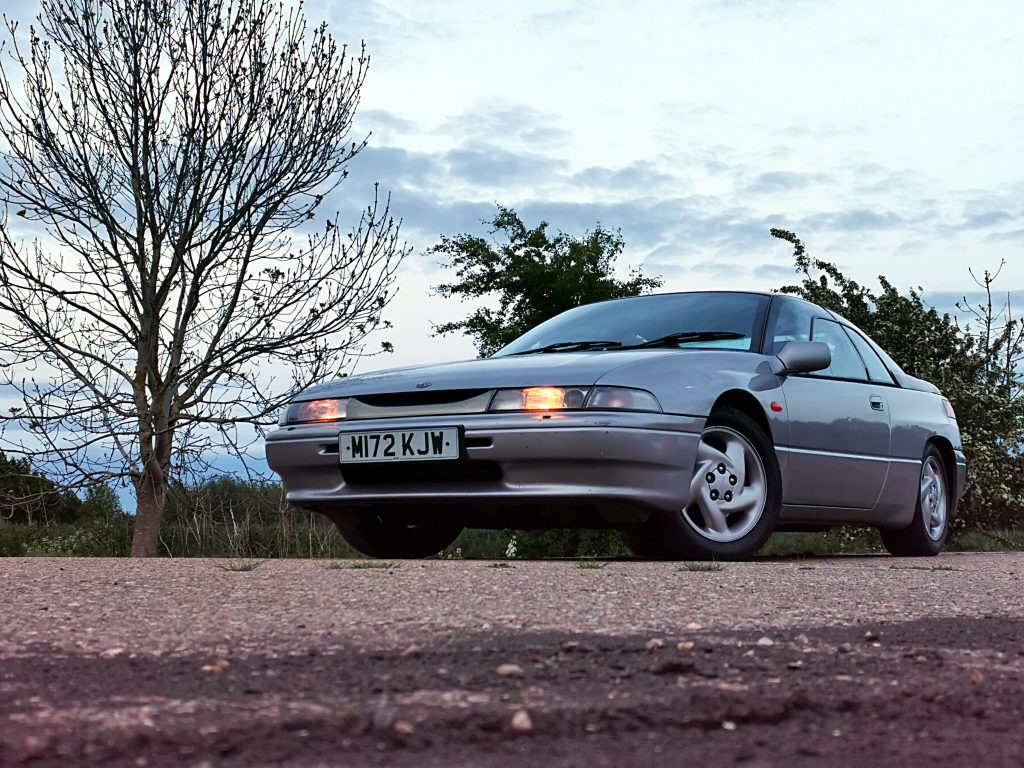
I’ve owned mine since 2016; despite two gearbox failures, I’d never sell it (or convert it to manual). Unlike the 3000GT, RX-7, 300ZX and Supra, mere mortals like me can still afford one. Budget on around £5800 for a minter, and make sure the auto box is cooled by either a separate unit or an uprated all-in-one aluminium radiator.
We will never see the likes of the Subaru SVX again. A peculiar blend of niche marketing, radical styling and sincere ambition, it’s the cheapest Radwood star by a country mile.
SPECIAL THANKS: Dan Hirst, Old Japanese Car
Keep your classic on the road
At Hagerty, our mission is simple: to help you protect the car you love. Discover trusted classic car insurance from the people who get it.
